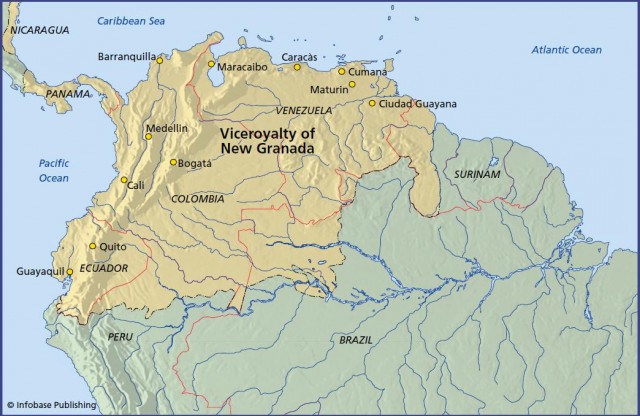Jose Mutis and the Bogota Botanical Garden
The Jardin Botanico Jose Celestino Mutis in Bogota, Colombia, is a research and scientific center and the country's largest botanic garden. It occupies 20 acres (8 ha) and specializes in Andean species, with greenhouses containing plants from every region of the country, including 5,000 species of orchids and the world's largest example of the giant Amazonian water lily (Victoria regia).
The garden was established in 1955 by the Jesuit priest Enrique Perez Arbelaez and is named after one of the most important Spanish botanists of the 18th century, Jose Celestino Bruno Mutis (1732–1808). In 1764, Mutis asked for financial support to create a botanical garden in Bogota, but no funds were available and he was refused. However, Mutis did establish a botanical garden in the city of Mariquita, built up a large botanical library, and assembled a herbarium with more than 24,000 plants. He also possessed about 5,000 plant drawings made by his pupils. His book Flora de Bogota o de Nueva Granada (Flora of Bogota or New Granada) contained more than 6,000 illustrations. He was able to send the manuscript home to Spain, but the government could not afford to publish the work. Mutis made a special study of the genus Cinchona, which contains 23 species of trees and shrubs that occur naturally from Bolivia northward to Colombia and Venezuela, with one found in Costa Rica. A number of chemical substances are extracted from them, including quinine, which is still used to treat malaria. In Mutis's day, physicians believed cinchona would cure any number of illnesses. Mutis described the geographical distribution of cinchonas and listed all the species and varieties, with their therapeutic uses. He wrote several articles on cinchona and quinine, but although he sent the manuscript of his most important book on the subject, El arcano de la quina (The mystery of cinchona), to Madrid, it arrived at a time when Spain was at war with France, and it was not published. Part of the work was finally published in 1828, and the scientific part was discovered later in a shed in the Madrid botanical gardens. That text was published in 1867 and the accompanying tables in 1870.

Jose Celestino Bruno Mutis y Bosio was born in Cadiz, Spain, on April 6, 1732. He studied medicine, first at the Cadiz College of Surgery and then at the University of Seville, from which he graduated in 1755 and received his doctorate in medicine in 1757. He taught anatomy in Madrid from 1757 until 1760, at the same time studying botany at what was then the Migas Calientes Botanical Gardens in Madrid (now the Real Jardin Botanico de Madrid). Mutis also studied mathematics and astronomy. On September 7, 1760, Mutis sailed from Spain to become the principal physician of the viceroy of New Granada, arriving in Bogota on February 24, 1761. In 1772 Mutis was ordained a priest. New Granada was the name given to the Spanish colonies in northern South America. The map on page 77 shows its extent.
Soon after his arrival, Mutis began his botanical investigations, and in 1763 he proposed to the Spanish king that he undertake an expedition to study the flora and fauna of New Granada. It took the king until 1783 to authorize this, and that was when the royal botanical expedition that Mutis led began. It continued for 25 years and covered approximately 3,000 square miles (8,000 km2). Mutis collected specimens, labeling them and writing detailed descriptions of the places he found them. He sent all of his vast collection of material back to Spain in 105 boxes, where the plants, manuscripts, and drawings were stored in a shed in the botanical gardens. In 1801 the German explorer Alexander von Humboldt stayed with Mutis for two months and was greatly impressed by Mutis's botanical collection. Mutis died in Bogota on September 11, 1808.
- Jean-Baptiste Lamarck and the Royal Garden, Paris
- Sir William Hooker, the First Official Director
- Sir Joseph Banks, Unofficial Director of Kew
- Sir Henry Capel, Princess Augusta, and the Royal Botanic Gardens at Kew
- Tulipomania
- Carolus Clusius, the Leiden Botanical Garden, and the Tulip
- Pisa, Padua, and Florence, the First Botanical Gardens
- The Rise of the Herbarium
- Luca Ghini and How to Press Flowers